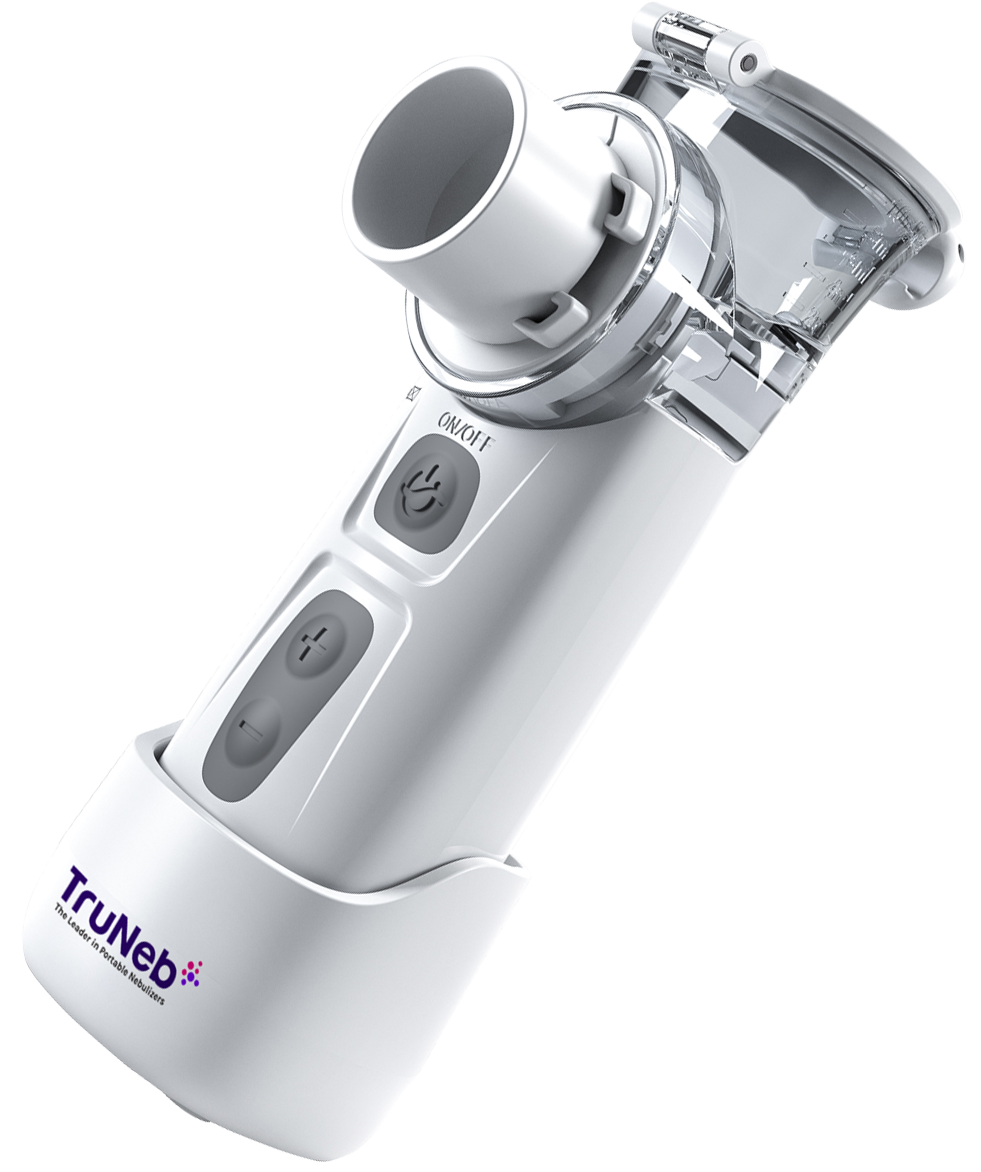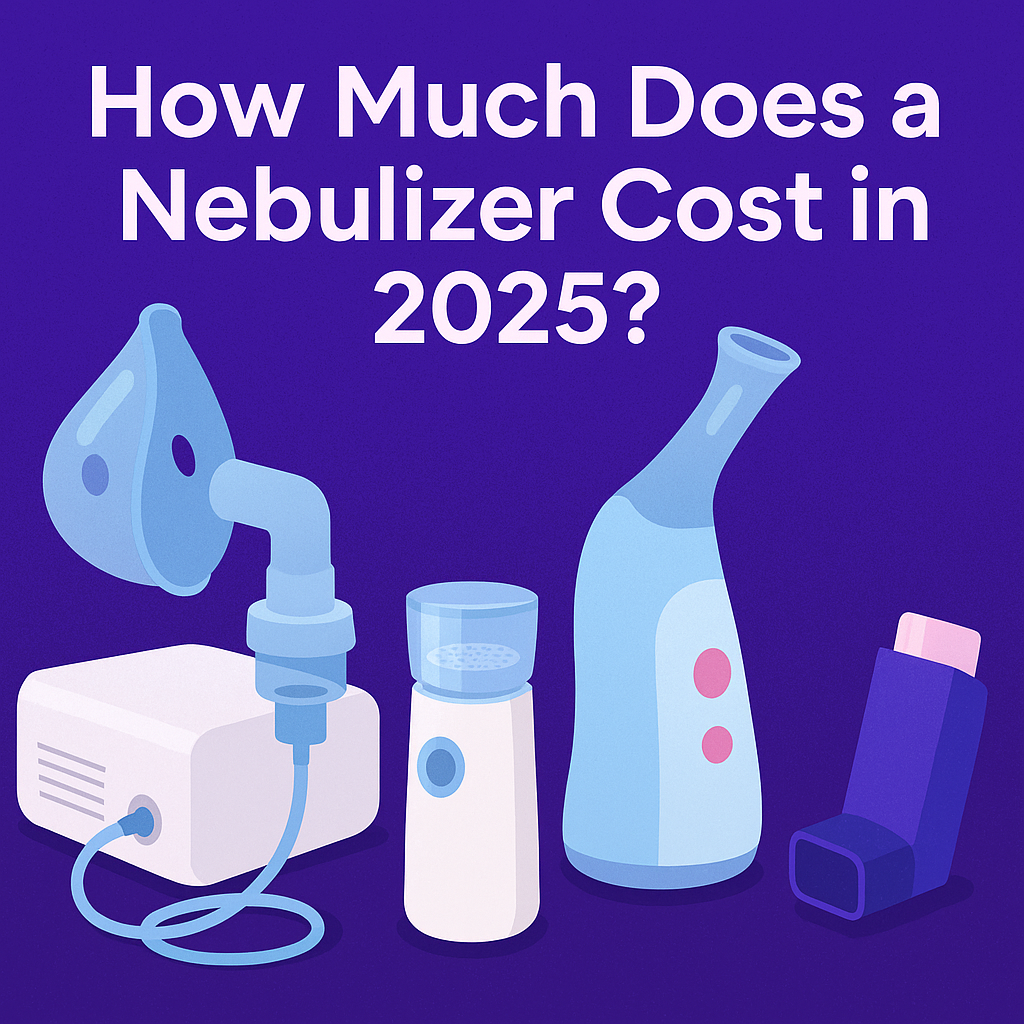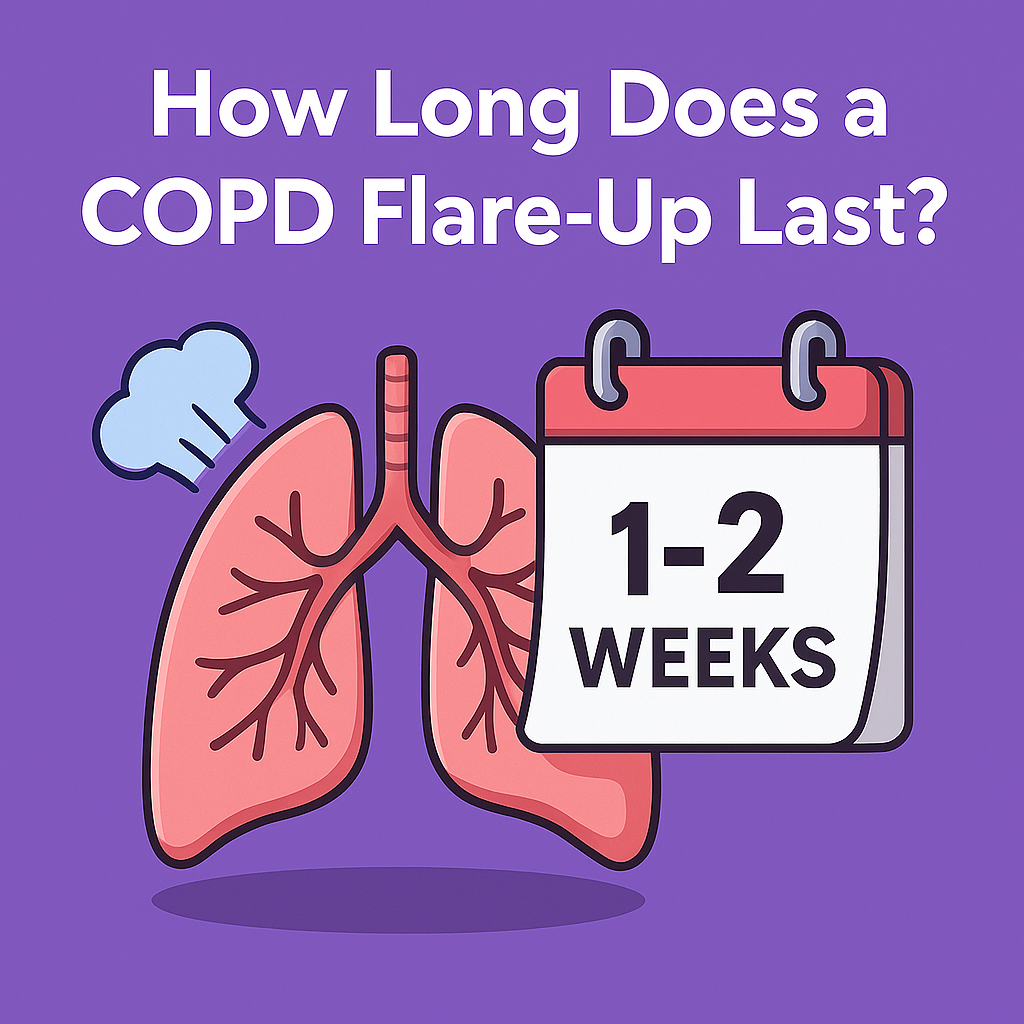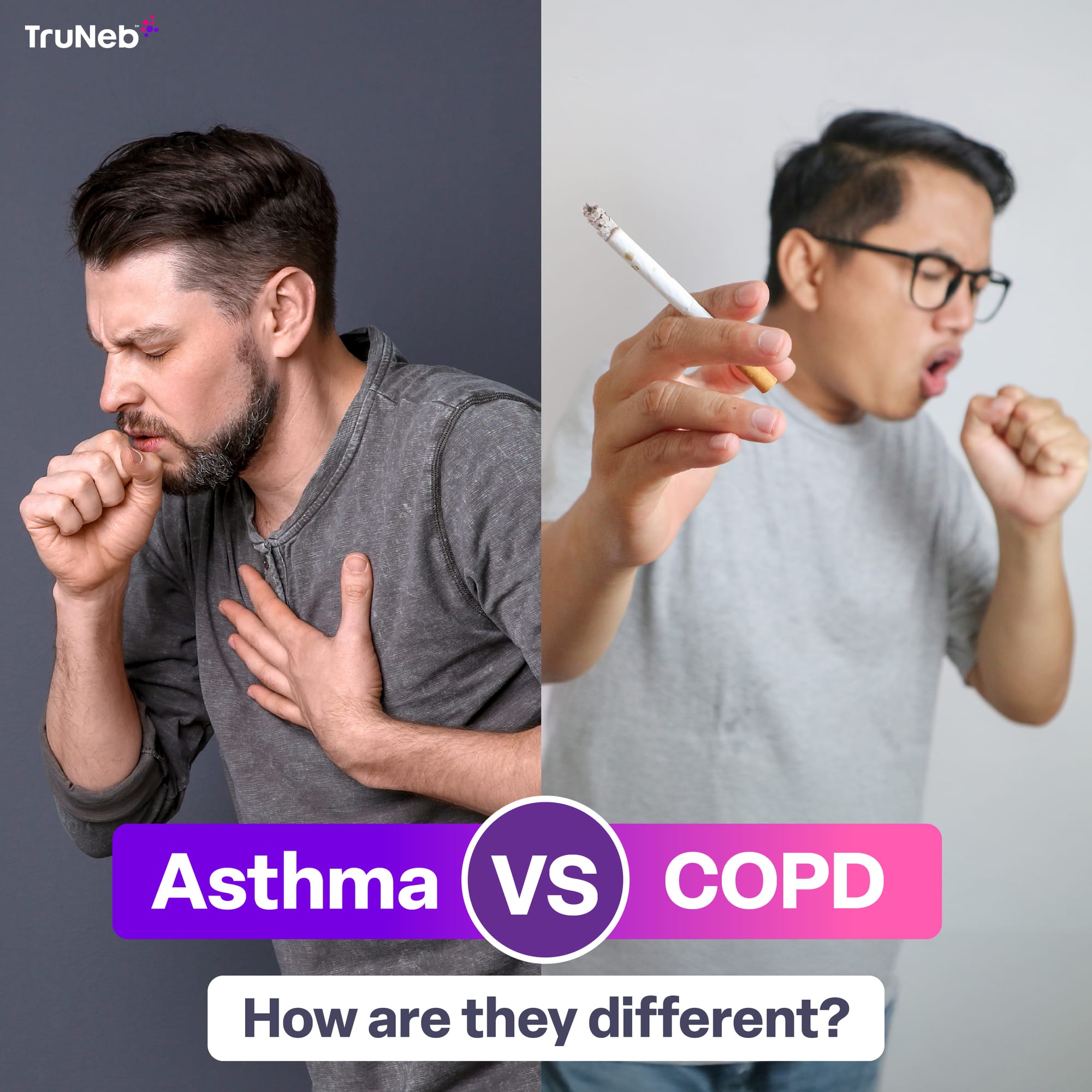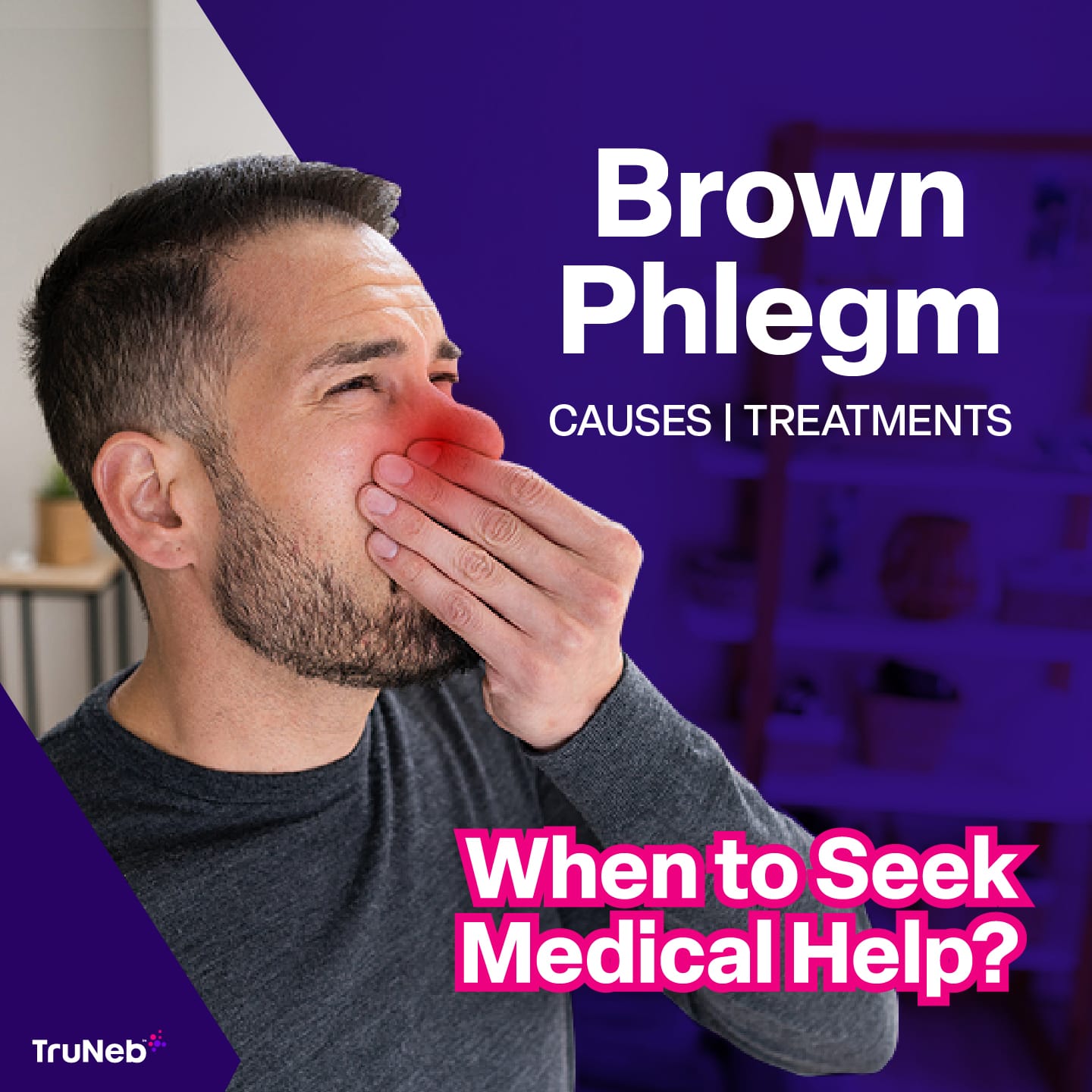On this page
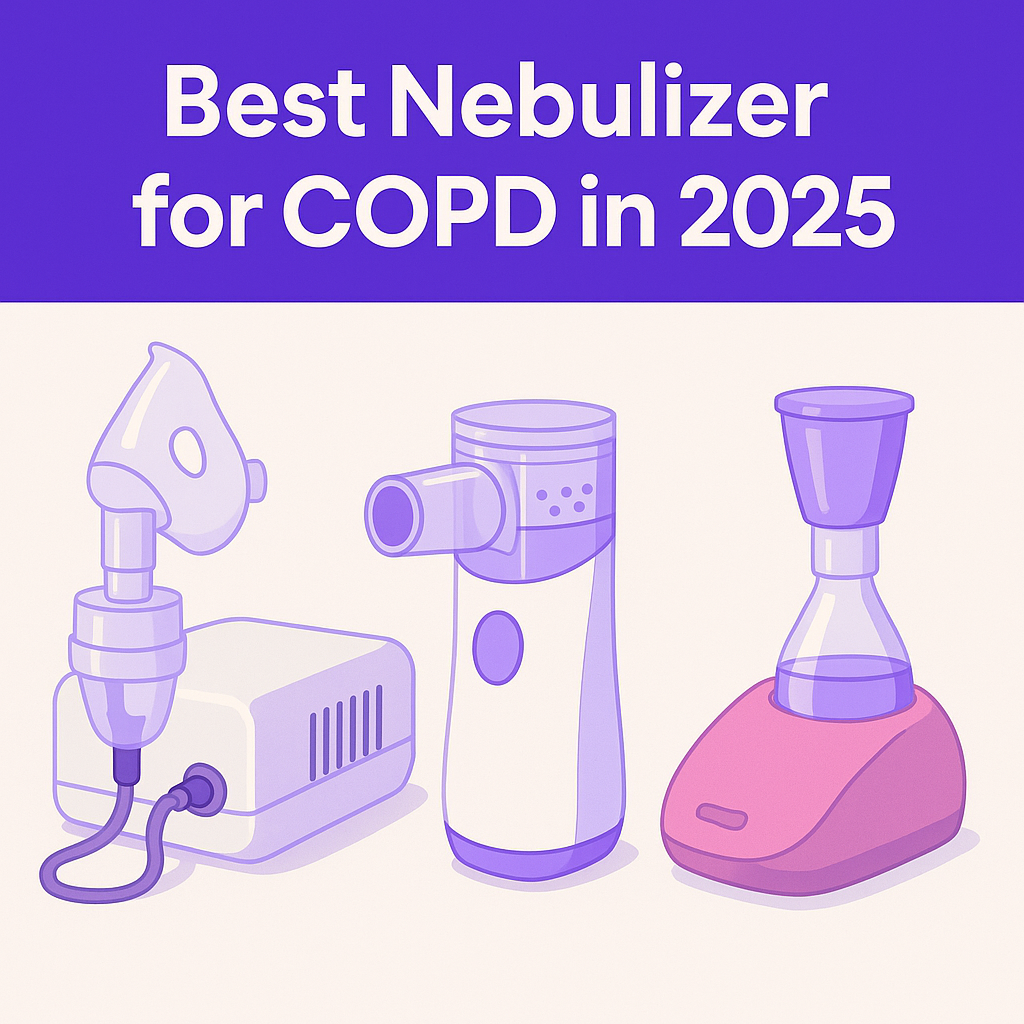
If you or someone you love is living with chronic obstructive pulmonary disease (COPD), you know how much every breath can matter. And when symptoms like coughing, wheezing, or tightness in the chest start to flare up, having the right medications and treatments on hand can make all the difference.
In this guide, we’ll break down everything you need to know about finding the best nebulizer for COPD in 2025—from how they work to what features to look for, plus a short list of top-rated options (including the best portable nebulizer for COPD patients on the go). Whether you're new to nebulizers for COPD or just looking for an easier way to manage your symptoms, this is your starting point.
Living with COPD Is Hard Enough. Finding the Right Nebulizer Shouldn’t Be.
COPD affects millions of people in the U.S., making it harder to breathe, move, and live the way you want to. And while treatments have come a long way, not every option works the same for every person.
A lot of people with COPD rely on inhalers to manage symptoms, but not everyone finds them easy to use. If you’ve ever struggled with timing the spray just right or taking a deep breath when your lungs feel tight, you’re not alone. That’s where nebulizer therapy for COPD comes in.
A COPD nebulizer transforms your liquid medication into a fine mist you can breathe in normally (no coordination required). It’s especially helpful during flare-ups, when your lungs need fast relief.
Today’s nebulizers for COPD aren’t just bulky machines you remember from the past. Compact portable nebulizers (like TruNeb’s handheld mesh device) make breathing treatments more convenient than ever, no matter where you are.
Why Use a Nebulizer for COPD?
When Nebulizer Therapy for COPD Makes Sense
COPD can make it tough to get a full breath, especially during flare-ups or when your usual maintenance meds aren’t enough. Some patients manage fine with inhalers,but others need a more reliable, accessible way to deliver medication deep into their lungs.
Nebulizer therapy for COPD is often prescribed when:
- You have frequent COPD flare-ups that need fast-acting treatment.
- You find metered-dose inhalers difficult to coordinate.
- You’re managing multiple medications at once.
- You’re dealing with severe shortness of breath or fatigue.
Because you don’t have to time your inhale or press a button while breathing in, COPD and nebulizer treatments are the magic combo—especially for older adults, patients with limited dexterity, or those recovering from a hospitalization.
What a Nebulizer Does (And Why It Works)
A nebulizer takes your liquid medication and turns it into an aerosolized mist you can breathe in through a mouthpiece or mask. That mist travels deep into your lungs, delivering the medication right where it's needed.
Unlike oral meds that take time to circulate through your system, or inhalers that can be tricky to use effectively, COPD nebulizers offer:
- Targeted drug delivery
- Faster symptom relief
- Better deposition of medication in the lower airways
- An easier experience during difficult breathing episodes
These breathing treatments are often used to deliver bronchodilators, steroids, or saline. All of which can help open airways, reduce inflammation, and clear mucus. Because they require little effort from the patient, they’re especially useful during severe flare-ups or first thing in the morning when symptoms tend to be worse.
Inhaler vs. Nebulizer: Which Is Better for You?
If you’re deciding between an inhaler vs nebulizer for COPD, it helps to understand how they differ:
| Inhaler | Nebulizer | |
|---|---|---|
| Form | Small, pressurized device | Machine with mask or mouthpiece |
| How to Use | Must time your breath and spray | Just breathe normally |
| Use Case | Great for quick, on-the-go doses | Ideal during flare-ups or for longer treatments |
| Delivery | Fast, but less precise if used incorrectly | Consistent, effective aerosol therapy |
Most COPD patients end up using both. A metered-dose inhaler is convenient and fast. But when symptoms escalate—or when you just need a break from trying to coordinate your breath—portable nebulizers offer a simpler, more comfortable alternative.
Want a deeper comparison? Here’s our full breakdown on nebulizers vs. inhalers.
Understanding the Types of Nebulizers for COPD
Not all nebulizers are created equal, especially when it comes to treating a chronic condition like COPD. Even though every device has the same goal (turning liquid medication into a breathable mist), how they do it and how convenient they are can vary a lot.
Let’s break down the three main types of COPD nebulizer machines you’ll see, so you can find the one that works best for your routine, your lifestyle, and your breathing needs.
Compressor (Jet) Nebulizers
Also known as jet nebulizers, these are the most traditional type of COPD nebulizer. They work by using an air compressor to turn liquid medication into mist. They’re plug-in devices and often require tubing, a medication cup, and either a mask or mouthpiece.
Compressor nebulizer pros:
- Compatible with most COPD medications
- Affordable and widely available
- Reliable for daily, at-home use
Cons:
- Bulky and less portable
- Annoyingly loud
- Requires access to an outlet during use
If you're mostly taking treatments at home and don’t mind a larger setup, a plug-in nebulizer like this can get the job done. Just know you’ll be tethered to one spot while using it, and you’ll need to clean and maintain all those extra parts.
Mesh Nebulizers
Mesh nebulizers are the most advanced option available today. They use vibrating mesh technology to deliver medication as a fine mist through tiny holes in a thin membrane.
Why does that matter? It means:
- Faster treatments (5 minutes or less)
- Whisper-quiet operation
- Lightweight, compact design
In fact, mesh nebulizers are usually the top choice for people who travel, have busy lifestyles, or just want a device that’s simple and fast. If you’re looking for the best portable nebulizer for COPD, a mesh model is hard to beat.
The TruNeb™ Portable Mesh Nebulizer is our go-to recommendation here. It’s a handheld nebulizer that fits in your pocket, doesn’t require tubing or a compressor, and is ready to go with just the press of a button. Whether you’re at home, running errands, or on a plane, TruNeb delivers treatment without the hassle.
Ultrasonic Nebulizers
Ultrasonic nebulizers use high-frequency sound waves to aerosolize medication. Like mesh models, they’re usually quiet and compact. But they have one important caveat: they’re not compatible with every medication.
While they’re great for saline or bronchodilator solutions, some steroid suspensions can’t be used with them. That’s why they’re more commonly used for conditions like asthma or congestion rather than advanced COPD.
Still, if you’re just using saline or quick-relief meds and want a fast, travel nebulizer, ultrasonic devices can be a good option.
Ultrasonic nebulizer pros:
- Fast treatments
- Nearly silent
- Portable and lightweight
Cons:
- Not compatible with all COPD medications
- Can be pricier than basic compressor units
If you’re considering an ultrasonic model, double-check with your doctor or pharmacist to make sure it fits your treatment plan.
COPD Nebulizer Medications: What You’ll Be Taking
Once you’ve found the right device, the next question is: what goes in it?
COPD nebulizer medications fall into a few categories. Some are used for quick relief, others for long-term control. Here’s a quick overview of the most common options used in nebulizer treatment for COPD.
Common Medications Delivered via Nebulizer
Short-Acting Bronchodilators
These meds relax your airway muscles quickly, making it easier to breathe during a flare-up.
- Albuterol
- Levalbuterol (Xopenex)
Labeled as “rescue” meds, these are common in both inhalers and COPD nebulizers.
Long-Acting Bronchodilators
Designed for daily use, these help keep airways open over time.
- Arformoterol (Brovana)
Taken once or twice a day via nebulizer therapy for COPD, long-acting bronchodilators can reduce the frequency and severity of flare-ups.
Steroids
These reduce inflammation in the lungs, helping prevent symptoms from getting worse.
- Budesonide (Pulmicort Respules)
Often prescribed alongside bronchodilators for more moderate to severe COPD.
Mucolytics
Meds that thin out mucus so it’s easier to cough up.
- Hypertonic saline
Used especially in patients with chronic bronchitis-type COPD where mucus is a major problem. (You can read more about how hypertonic saline works here.)
New Developments in COPD Nebulizer Therapy
In 2024, the FDA approved a brand new drug for COPD: ensifentrine, sold under the brand name Ohtuvayre.
What makes this exciting?
- It’s the first new nebulized maintenance treatment for COPD in over a decade
- It combines dual-action bronchodilation and anti-inflammatory effects
- It’s delivered via nebulizer, not inhaler
For patients who struggle with existing treatments or want a once-daily option with promising clinical results, ensifentrine may represent the future of nebulizer therapy for COPD.
It’s also a sign that drugmakers are investing in FDA-approved nebulizer drugs again. Great news for the millions of people managing COPD daily.
How to Choose the Best Nebulizer for COPD
Choosing the right nebulizer can feel overwhelming with so many models, features, and price points on the market. But once you know what to look for, the decision gets a lot easier.
Whether you’re shopping for daily use at home or need a travel nebulizer for treatments on the go, here’s what matters most when finding the best portable nebulizer for COPD.
What to Consider When Buying
Portability and Size
Do you plan to use your nebulizer at home, or do you need something that fits in your bag or carry-on? For people who want something quiet, convenient, and discreet, a compact battery-operated nebulizer is a game-changer.
Power Source: Rechargeable vs. Plug-In
COPD nebulizers come in two main forms:
- Plug-in nebulizers (like traditional compressor models) require a wall outlet.
- Rechargeable nebulizers give you more freedom and flexibility, especially if you're often away from home or want to avoid being tethered to a wall.
Noise Level (Quiet Nebulizer)
Some nebulizers hum loudly while they run. Others (like mesh or ultrasonic models) are whisper-quiet. A quiet nebulizer makes treatments less stressful and more discreet, whether you’re in public or trying to relax at home.
Ease of Cleaning and Maintenance
Frequent use means frequent cleaning. Look for an easy-to-clean nebulizer with fewer removable parts and straightforward instructions. Simpler devices tend to be more hygienic and last longer with less effort.
Medication Compatibility
Not every nebulizer is compatible with every medication. If you use steroid suspensions or mixed meds, make sure the device can handle them. Mesh and compressor models usually offer the most flexibility.
Warranty and Support
Durability matters. A solid warranty and accessible customer support can save you frustration if anything breaks or stops working. If you’re buying a mesh nebulizer, make sure the company offers mesh nozzles you can replace regularly.
Our Top 5 Best Nebulizers for COPD (2025 Edition)
With dozens of options on the market, we’ve narrowed it down to five COPD nebulizer machines that consistently deliver on performance, portability, and ease of use.
Whether you’re looking for an at-home setup or a pocket-sized device to take on the road, these are the top picks for the best nebulizer for COPD in 2025.
1. TruNeb™ Portable Mesh Nebulizer – Best Pick Overall
Looking for the best portable nebulizer for COPD? This is it.
The TruNeb™ Portable Mesh Nebulizer is small enough to fit in your pocket but powerful enough to deliver consistent, reliable treatment wherever you are. It uses advanced vibrating mesh technology to create ultra-fine mist particles that reach deep into the lungs. You DO NOT need a prescription for this breathing treatment device.
- Mesh atomization for fast, effective delivery
- Whisper-quiet operation (no loud motor)
- Rechargeable base with USB charging
- Lightweight and easy to clean
- Works with most COPD medications
If you need a travel-friendly nebulizer that doesn’t sacrifice performance, TruNeb is the one to beat.
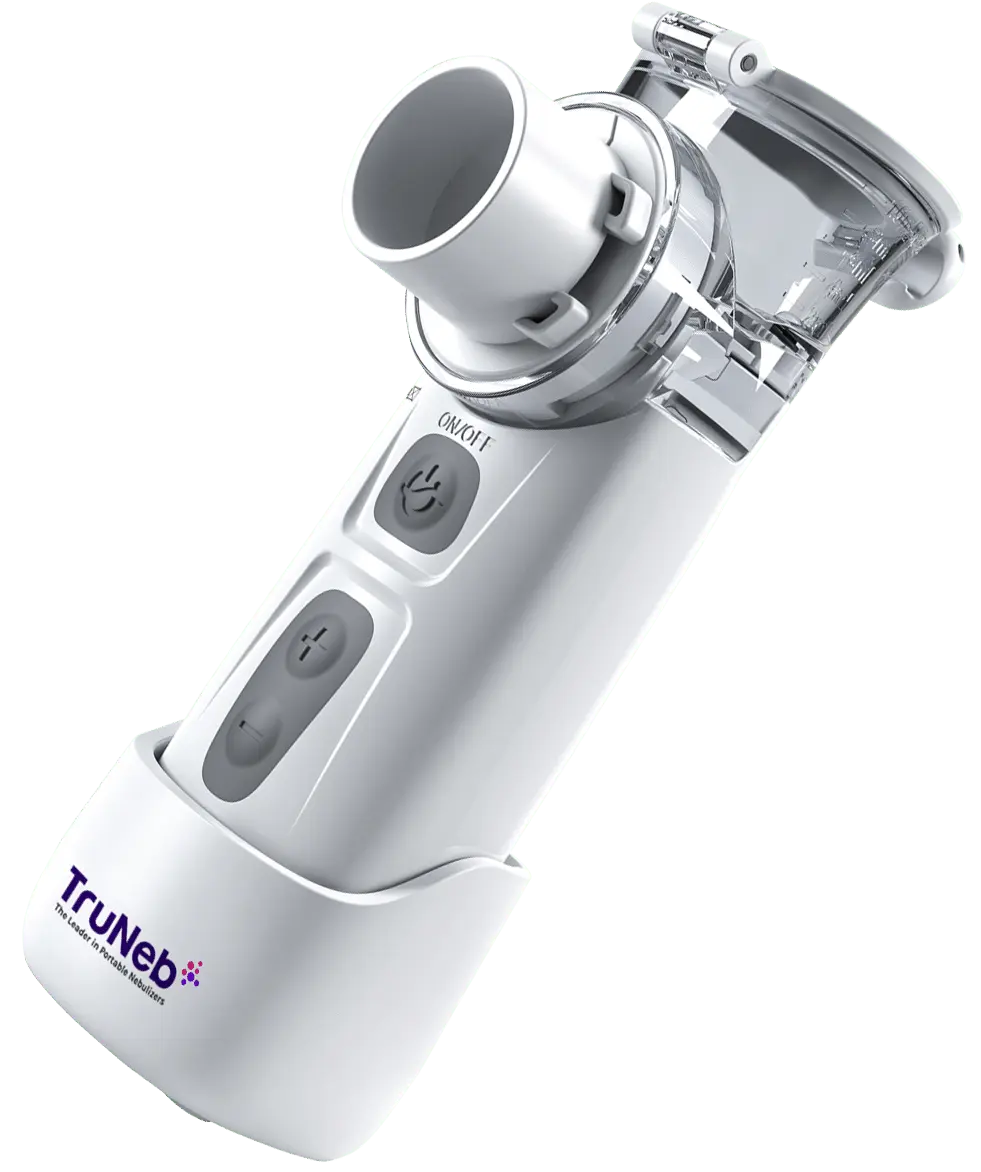
2. Drive Medical Nebulizer – Best for Home Use
A sturdy compressor nebulizer that’s ideal for daily home treatments. While not portable, it’s reliable, affordable, and compatible with a wide range of medications.
- Traditional jet nebulizer with powerful airflow
- Plug-in operation
- Great for those who don’t travel often
3. Philips InnoSpire Go – [NOW DISCONTINUED]
This premium mesh nebulizer combines cutting-edge design with top-tier performance. It’s fast, sleek, and backed by a well-known brand in respiratory care.
- Treatment time under 4 minutes
- Integrated mouthpiece and minimal parts
- Portable and rechargeable
- More expensive, but very high quality
NOTE: The Philips InnoSpire Go is now discontinued. We recommend TruNeb™ as the best alternative.
4. Omron CompAir – Lightweight Compressor
A top contender for frequent users. This compressor nebulizer is on the smaller side and even comes in a version for kids with child-friendly colors.
- Great for home use and easy storage
- Plug-in power
- Compatible with most medications
- Lightweight
5. Pari Trek S – Powerful Portable Compressor
Unlike other portable options, this is a compressor-style nebulizer that’s still small enough for travel. It comes with a lithium battery pack and delivers strong, consistent mist output.
- Best of both worlds: portable + powerful
- Ideal for those who need a compressor-compatible medication
- Includes carrying case and multiple accessories
- AC/DC power options
Tips for Using Your COPD Nebulizer Safely
Using a nebulizer correctly doesn’t just improve treatment results—it helps keep you safe, too. Here are some simple tips to protect your lungs and get the most out of every nebulizer treatment.
- Clean after each use. Follow manufacturer cleaning instructions. Rinse the medication cup and mouthpiece or mask with warm water. Let everything air dry completely.
- Sanitize regularly. Once a week, a vinegar-water solution should be part of your cleaning regimen. Or use a manufacturer-recommended disinfectant to sanitize your nebulizer.
- Replace parts as needed. Tubing, mouthpieces, and nebulizer cups wear out over time. Replace them according to manufacturer instructions (usually every 3–6 months). Mesh nebulizers used daily generally need a new mesh nozzle every 1-2 months.
- Store it properly. Keep your nebulizer in a clean, dry space. For travel nebulizers, use a case to prevent dust and damage.
- Don’t skip maintenance. A poorly maintained device can lead to contamination or inconsistent medication delivery. Make a habit of routine upkeep to safely maintain your nebulizer.
Frequently Asked Questions About COPD and Nebulizers
Do I Need a Prescription to Get a Nebulizer?
In most cases, yes. Many COPD nebulizer machines require a prescription, especially if you want your insurance to cover the cost. The good news is, some portable nebulizers (like TruNeb) can be purchased without one. You’ll still need a prescription for the medications you use in it.
Can I Use a Nebulizer During a COPD Flare-Up?
Absolutely. In fact, many people rely on nebulizer therapy for COPD during flare-ups because it delivers fast relief without needing to coordinate your breathing. Talk to your doctor about keeping a rescue medication on hand for these situations.
Is a Nebulizer Better Than an Inhaler for COPD?
It depends on your needs. Inhalers are compact and fast, but can be hard to use correctly, especially during a flare-up. Nebulizer treatments are easier to take and often more effective for people with severe symptoms or trouble using inhalers.
Are Nebulizer Medications Covered by Insurance?
Yes, most COPD medications prescribed for use in a nebulizer are covered by insurance. Coverage varies based on your provider and plan. You may also need prior authorization or a specific diagnosis code for full reimbursement. Always check with your provider or pharmacy first.
Are Portable Nebulizers Safe to Travel With?
Yes, and that’s why people love them. However, we strongly recommend bringing a rescue inhaler as a backup. Every device in the world with electronic components has the risk of not being usable. Even just dropping a device by accident could mean it’s no longer functioning. An inhaler doesn’t rely on power or electronics to operate. Keep it in your bag, just in case!
The Best Nebulizer for COPD Is the One That Fits Your Life
COPD is a daily challenge, but your treatment routine doesn’t have to be.
Whether you're managing mild symptoms or dealing with frequent flare-ups, the right nebulizer can help you breathe easier, stay active, and feel more in control. From high-powered home models to compact travel nebulizers that slip into your pocket, there’s an option out there that fits your lifestyle. Many people have both!
If you're still not sure where to start, the TruNeb™ Portable Mesh Nebulizer is a top pick for good reason. It’s reliable, easy to use, whisper-quiet, and built for use anywhere—making it one of the best portable nebulizers for COPD in 2025.
The best results come not just from the device itself, but from using it consistently, cleaning it regularly, and following your doctor’s guidance.

